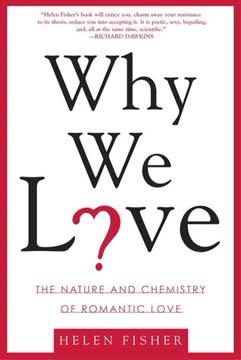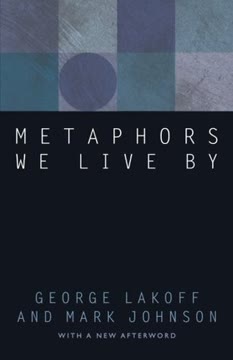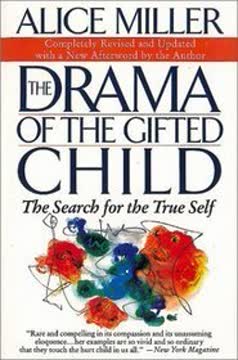Key Takeaways
1. Love is a biological imperative, not just a feeling.
From birth to death, love is not just the focus of human experience but also the life force of the mind, determining our moods, stabilizing our bodily rhythms, and changing the structure of our brains.
Beyond sentiment. Love is often relegated to the realm of art and philosophy, seen as a mysterious, intangible force. However, science reveals love as a fundamental biological process, as real and impactful as digestion or respiration. It is deeply embedded in our physiology and essential for survival and well-being.
Life-sustaining force. The body's physiology is designed for connection. Relationships are not merely social preferences but biological necessities that influence everything from mood and stress levels to immune function and even brain structure. This biological reality underscores why love is so central to the human experience.
Challenging old views. Traditional views often separate mind and body, seeing emotions as troublesome remnants to be controlled by intellect. Modern science, however, demonstrates that where intellect and emotion clash, the heart often has the greater wisdom, rooted in ancient neural architecture.
2. The brain's ancient structure shapes emotional life.
The brains ancient emotional architecture is not a bothersome animal encumbrance. Instead, it is nothing less than the key to our lives.
Triune brain. The human brain is not a single, harmonious unit but a layered structure reflecting evolutionary history:
- Reptilian brain: Controls vital functions (breathing, heart rate) and basic survival instincts (startle, territoriality). Lacks emotional life.
- Limbic brain: The mammalian innovation, seat of emotions, social connection, caretaking, play, and vocal communication (like the separation cry).
- Neocortical brain: The newest part, responsible for language, reason, planning, and abstraction.
Ancient roots. Much of our emotional life originates in the older, non-rational parts of the brain, particularly the limbic system. This explains why emotions can feel unruly and resistant to logical control – words and reason mean little to at least two of the three brains.
Fragmented mind. This layered structure means different parts of the brain operate on different principles and can sometimes be in conflict. Understanding this fragmentation is key to understanding why emotional life is often confusing and unpredictable.
3. Emotions are a mammalian social sense organ.
For human beings, feeling deeply is synonymous with being alive.
Universal language. Facial expressions of emotion are universal across cultures and innate, as seen in congenitally blind babies. This suggests emotions are a fundamental communication system, not learned social behaviors.
- Anger, happiness, fear, disgust are recognized globally.
- Non-human mammals also share similar expressions.
Limbic resonance. The limbic brain allows mammals to sense and attune to the inner states of others. This "limbic resonance" is a wordless harmony, a palpable and intimate connection between nervous systems.
- Eye contact is a key conduit for this exchange.
- Emotions are contagious because limbic states can leap between minds.
Sensing others. Emotionality functions as a "social sense organ," allowing mammals to detect and analyze the internal states and motives of those around them. This is crucial for navigating social environments and forming bonds.
4. Relationships are vital physiological regulators.
Neither is a functioning whole on his own; each has open loops that only somebody else can complete.
Open-loop system. Unlike self-regulating closed systems (like a car's cruise control), mammalian physiology is partly an "open-loop" system. We depend on external sources for stability.
- Babies are maximally open-loop, needing parents to regulate vital rhythms.
- Adults remain social animals, requiring external stabilization.
Limbic regulation. Close relationships provide this external regulation, a "mutually synchronizing exchange" that fine-tunes physiological parameters:
- Heart rate, blood pressure, body temperature
- Hormone levels (like cortisol and oxytocin)
- Sleep rhythms, immune function
Health consequences. The lack of stable relationships and limbic regulation has measurable negative impacts on physical health.
- Increased death rates after heart attack in isolated individuals.
- Reduced lifespan in cancer patients lacking social support.
- Failure to thrive and increased mortality in institutionalized infants.
5. Early love sculpts the developing emotional brain.
Love, and the lack of it, change the young brain forever.
Experience shapes wiring. While genes provide a neural scaffold, experience, particularly early relationships, is crucial for shaping the brain's final structure. The brain prunes unused neurons and strengthens connections based on early input.
- Auditory experience hones phoneme recognition.
- Visual experience is needed for depth perception.
Attachment as neurodevelopment. Limbic contact with parents hones the emotional scaffold into a functional template. Parents guide the development of a child's limbic system through resonance and regulation.
- Responsive parenting leads to secure attachment and resilient children.
- Erratic or cold parenting leads to insecure attachment and emotional vulnerabilities.
Permanent impact. The quality of early attachment leaves a lasting mark on brain neurochemistry and structure. Monkeys raised in isolation or by stressed mothers show permanent deficits in social behavior and increased vulnerability to anxiety and depression, demonstrating that the mammalian nervous system cannot self-assemble without relational input.
6. Emotional learning is implicit and forms powerful patterns.
Implicit memory ensures that camouflaged learning permeates our lives.
Dual memory systems. The brain has two main memory systems:
- Explicit memory: Conscious recall of facts and events (hippocampus-dependent). Fallible and prone to distortion.
- Implicit memory: Unconscious learning of skills, patterns, and associations. Operates automatically and without awareness.
Intuition's power. Implicit memory allows us to learn complex patterns without conscious understanding, forming "intuition." Examples include:
- Predicting weather better than logic allows.
- Recognizing grammatical correctness without knowing the rules.
- Sensing risk in a gambling task before conscious awareness.
Attractors. Repeated experiences strengthen neural connections, forming "Attractors"—ingrained patterns that pull new information towards familiar configurations. This is how we recognize handwriting despite variations or why proofreading is difficult.
Unconscious knowledge. Emotional learning, particularly in early life, is largely implicit. A child absorbs the "grammar and syntax" of relationships, forming emotional Attractors that operate outside conscious awareness, guiding future responses and choices.
7. These patterns shape who we love and how we relate.
Because his mind comes outfitted with Hebbian memory and limbic Attractors, a person's emotional experience of the world may not budge, even if the world around him changes dramatically.
Transference. The brain's Attractors explain "transference"—the tendency to respond to others as if they were figures from the past. Our implicit emotional patterns project onto new relationships, shaping how we perceive and interact with partners.
Seeking the familiar. People are drawn to partners whose emotional patterns resonate with their own ingrained Attractors, even if those patterns are unhealthy. Familiarity, even if painful, can feel more compelling than the "stagnant pleasure" of a relationship that doesn't match the implicit template.
Collaborative reality. Emotional reality is collaborative. One person's Attractors can activate compatible patterns in another, influencing their emotional state and behavior. Relationships are a "binary star," a flux of exchanged force fields where each person's emotional world bends the other's.
Limbic revision. Long-standing relationships don't just activate patterns; they reinforce them. This "limbic revision" means partners remodel each other's emotional brains over time, strengthening certain pathways and influencing who the other person is and becomes.
8. Emotional change requires limbic revision through relationship.
Helping someone escape from a restrictive virtuality means reshaping the bars and walls of a prison into a home where love can bloom and life flourish.
Beyond insight. While understanding can be helpful, it is insufficient to change deep-seated emotional patterns rooted in implicit memory and limbic Attractors. Logic and ideas bounce off the older parts of the brain.
Relational change. Changing emotional Attractors requires a different kind of influence: the force of another person's Attractors acting through a limbic connection. This "limbic revision" is the core mechanism of emotional healing and growth in adulthood.
Iterative process. Revision is not a sudden event but a gradual, painstaking process. A therapist (or a sufficiently attuned partner) gently and repeatedly moves the relationship in a different direction, offering a new pattern for the patient's brain to encode.
- New neural pathways are fragile initially.
- Repetition consolidates them into new Attractors.
9. Psychotherapy heals through biological connection, not just talk.
Psychotherapy’s transformative power comes from engaging and directing these ancient mechanisms.
Physiology of therapy. Psychotherapy is not merely a conversation; it is a physiological process rooted in limbic connection. It leverages the same biological mechanisms of resonance, regulation, and revision that shape us in early life.
Three core functions:
- Limbic Resonance: The therapist attunes to and accurately senses the patient's emotional world, helping the patient feel "known" and gain clarity about themselves.
- Limbic Regulation: The therapist provides a steadying presence, helping the patient regulate their emotions and internalize emotional balance over time. Dependence on the therapist is a necessary part of this process.
- Limbic Revision: Through repeated interaction, the therapist's healthy emotional Attractors influence and gradually reshape the patient's maladaptive ones, altering their implicit emotional knowledge.
The therapist's person. The effectiveness of therapy lies not in specific techniques or theories, but in the person of the therapist and their capacity for limbic connection. Their own emotional health and the strength of their Attractors are crucial for guiding the patient toward change.
10. Modern culture often blinds us to love's biological needs.
Cultures transform themselves in a few decades or centuries, while human nature cannot change at all.
Cultural clash. Human nature, shaped by millions of years of mammalian evolution, has fundamental needs for limbic connection. Modern culture, however, often promotes values and practices that conflict with these needs.
- Emphasis on individualism over interdependence.
- Prioritization of achievement and acquisition over relationships.
- Dismissal of emotional needs as weakness or pathology.
Ignoring biological reality. Practices like isolating infants at night or minimizing parental care for young children run counter to the biological need for limbic regulation and attachment, potentially increasing vulnerability to stress and emotional instability.
- High SIDS rates in cultures with separate infant sleep.
- Increased anxiety and depression in children with inconsistent care.
False connections. Culture encourages investing emotional energy in entities incapable of reciprocation, like corporations. This exploits the human need for connection but offers no genuine limbic return, leading to disappointment and burnout.
11. Ignoring love's needs leads to widespread suffering.
Where angels might have sat enthroned, devils lurked, and glared out menacing.
Emotional epidemic. The neglect of limbic needs contributes to rising rates of anxiety and depression. Without sufficient limbic regulation, individuals are less resilient to stress and more prone to emotional dysregulation.
Addiction as self-medication. When people lack healthy sources of limbic modulation, they may turn to substances (alcohol, drugs) to numb emotional pain. Addiction is often a desperate attempt to regulate a dysregulated limbic system.
- Close family ties are a strong protective factor against substance abuse.
- Lectures and willpower are ineffective against deep-seated limbic pain.
Violence and remorselessness. Severe early neglect can disrupt the neural development of empathy and social connection, leading to individuals who lack internal restraints against harming others. The rise of violent crime, particularly among youth, reflects the devastating consequences of profound limbic deprivation.
Societal cost. A culture that devalues love and connection pays a heavy price in human suffering, social breakdown, and the erosion of institutions. Prioritizing limbic health is not just about individual well-being but about the future of humanity itself.
Last updated:
FAQ
1. What is A General Theory of Love by Thomas Lewis about?
- Explores love’s biological roots: The book investigates how love is a fundamental, biological force shaped by the brain’s limbic system, influencing emotions, identity, and relationships.
- Interdisciplinary approach: It combines neuroscience, psychology, evolutionary theory, and humanistic insights to create a new paradigm for understanding love.
- Challenges traditional views: The authors critique Freudian and purely intellectual models, arguing that emotional life is governed by brain systems beyond conscious reasoning.
- Focus on relationships and healing: The book explains how love, attachment, and emotional health are deeply interconnected, affecting both individual well-being and society.
2. Why should I read A General Theory of Love by Thomas Lewis?
- Scientific revolution in love: The book offers a groundbreaking, science-based explanation of love, overturning myths and providing a lawful, biological framework for understanding emotions.
- Practical relevance: Readers gain insights into therapy, parenting, and emotional healing, with guidance on fostering healthier relationships and emotional well-being.
- Bridges science and poetry: The authors blend rigorous neuroscience with poetic humanism, making complex ideas accessible and meaningful.
- Cultural critique and guidance: The book challenges modern practices that undermine emotional health, encouraging readers to reconsider how love and attachment are nurtured.
3. What are the key takeaways from A General Theory of Love by Thomas Lewis?
- Love shapes identity: Early relationships and emotional experiences sculpt the brain, forming the foundation of who we are and how we relate to others.
- Limbic brain governs emotion: The limbic system is central to emotional life, attachment, and the unconscious exchange of feelings between people.
- Therapy as emotional revision: Psychotherapy works by engaging the limbic brain, allowing for emotional learning and healing through relationships.
- Culture impacts emotional health: Societal practices can either support or undermine our biological needs for connection, with real consequences for mental health.
4. How does A General Theory of Love by Thomas Lewis define and explain the limbic system’s role in love?
- Limbic system as emotional core: The limbic brain governs emotions, attachment, and social bonding, distinguishing mammals from other animals.
- Limbic resonance: Emotional states are unconsciously shared and synchronized between individuals, forming the basis of empathy and connection.
- Limbic regulation: Close relationships help stabilize each other’s physiological and emotional states, especially crucial in infancy and therapy.
- Limbic revision: Emotional patterns can be changed through repeated, emotionally rich interactions, allowing for healing and growth.
5. What is limbic resonance, and why is it important in A General Theory of Love by Thomas Lewis?
- Emotional attunement: Limbic resonance is the unconscious process by which people synchronize their emotional states through cues like facial expressions and tone of voice.
- Foundation of attachment: This resonance enables empathy, deep connection, and the regulation of each other’s emotional and physiological well-being.
- Basis for healing: Limbic resonance is essential in therapy and relationships, allowing for emotional growth and recovery from pain.
- Disruptions cause suffering: When limbic resonance is absent or disrupted, it can lead to emotional distress and illness.
6. How does A General Theory of Love by Thomas Lewis describe the development of emotional identity in children?
- Attachment shapes the brain: Early caregiver relationships form the neural architecture of the limbic system, influencing emotional regulation and social skills.
- Experience sculpts neural templates: Daily interactions, especially through limbic resonance and regulation, create the emotional core of the self.
- Pruning and specialization: The brain undergoes neuronal thinning, solidifying emotional identity based on the quality of early relationships.
- Critical role of nurture: Responsive parenting fosters secure attachment and healthy emotional development, while neglect can cause lifelong difficulties.
7. What are Attractors, and how do they influence relationships according to A General Theory of Love by Thomas Lewis?
- Definition of Attractors: Attractors are neural patterns formed early in life that shape emotional expectations and relationship templates.
- Unconscious influence: These patterns bias how we perceive and respond to love, often drawing us toward familiar emotional dynamics.
- Resistant to change: Early-formed Attractors are deeply ingrained and tend to dominate perception and behavior, making emotional change challenging.
- Role in therapy: Psychotherapy aims to revise maladaptive Attractors by creating new emotional experiences and reshaping neural pathways.
8. How does A General Theory of Love by Thomas Lewis explain the relationship between intellect and emotion?
- Separate neural systems: Emotion and intellect are governed by different brain systems, creating a natural divide in human experience.
- Emotion’s wisdom: The authors argue that emotional brain systems often guide behavior more effectively than rational thought.
- Limits of willpower: Emotional life cannot be commanded by intellect; feelings like love or sadness arise from brain systems outside conscious control.
- Therapy implications: Intellectual insight alone is insufficient for emotional change; the limbic brain must be engaged for true healing.
9. What does A General Theory of Love by Thomas Lewis say about the role of memory in love and emotional life?
- Dual memory systems: The brain has explicit (conscious) and implicit (unconscious) memory, with love deeply influenced by implicit emotional memories.
- Memory’s fluidity: Emotional memories evolve over time, shaped by ongoing experiences and neural plasticity.
- Attractors and perception: Early emotional experiences form Attractors that unconsciously guide relationship choices and responses.
- Therapeutic change: Emotional healing involves revising these implicit memories through new, emotionally rich experiences.
10. How do neurotransmitters like serotonin, opiates, and oxytocin affect love and attachment in A General Theory of Love by Thomas Lewis?
- Serotonin modulates mood: Serotonin can reduce emotional pain from loss and help people leave unhealthy relationships by dampening excessive emotional reverberation.
- Opiates ease pain: The brain’s opiate system alleviates both physical and emotional pain, explaining why love and social contact can soothe distress.
- Oxytocin fosters bonding: Oxytocin, the “love hormone,” promotes maternal behaviors, pair bonding, and social affiliation in both animals and humans.
- Neurochemistry of attachment: These neurotransmitters underpin the biological processes of attachment, comfort, and emotional regulation.
11. What are the implications of A General Theory of Love by Thomas Lewis for psychotherapy and emotional healing?
- Therapy as limbic interaction: Effective psychotherapy involves limbic resonance and regulation, not just intellectual discussion.
- Emotional knowledge is implicit: Therapy must engage the unconscious emotional mind to change deep-seated patterns.
- Love changes the brain: Relationships and therapeutic connections can remodel neural pathways, offering hope for emotional growth and healing.
- Adult change is possible: Although more difficult after childhood, emotional identity can be revised through intense, repeated, emotionally rich experiences.
12. What are the best quotes from A General Theory of Love by Thomas Lewis and what do they mean?
- “The heart has its reasons whereof Reason knows nothing.” (Pascal): Highlights the divide between emotion and intellect, emphasizing that feelings often transcend rational explanation.
- “We do and do not step into the same river. We are, and are not.” (Heracleitus): Reflects the dynamic, ever-changing nature of emotional identity shaped by ongoing experience.
- “Love makes us who we are, and who we can become.”: Underscores love’s role as a fundamental force shaping identity and potential.
- “The real voyage of discovery consists not in seeking new landscapes, but in having new eyes.” (Proust): Emphasizes that emotional healing and growth come from changing perception and internal patterns, not external circumstances.
Review Summary
A General Theory of Love explores the science of human emotions and connections from a neurobiological perspective. Readers found it beautifully written and insightful, praising its integration of scientific research with cultural wisdom. Many appreciated its explanations of brain structure, attachment theory, and the importance of emotional bonds. Some criticized the writing style as overly flowery or the content as derivative. Overall, reviewers found it thought-provoking, with valuable insights into relationships, child development, and the role of love in human wellbeing, though a few felt it didn't fully deliver on its premise.
Similar Books
Download PDF
Download EPUB
.epub digital book format is ideal for reading ebooks on phones, tablets, and e-readers.











